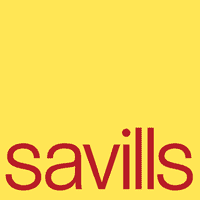You’ve got the job, that’s great. Typically the nerves don’t stop there. The night before… the train journey there! You have to face the daunting task of acclimating to your new work environment, your tasks and your colleagues. I remember my first day at Cherry Pick People, it had been a long time since I had started a new role with a brand new team and wow was my nerves all over the place! I was lucky enough to find the team extremely welcoming and was eased in very nicely but the anxiety is most present on the first day as you step into unfamiliar territory, but you can ease those nerves with a plan of action which is what I set off to do. I remember giving myself the prep talk and reminding myself that I had been chosen because they believed I was the right fit for the team and the right person for the job, I reminded myself that I had gone through the 3 stage interview process up against other people and I was chosen, sometimes you’ve got to give yourself that confidence boost!
Remember the Primary Task
Often the most nerve-wracking component of the first day has to do with meeting your colleagues and managers, getting to know the team and company structure. While this is important to execute your role, focus on why you’ve come to work and that’s to work. You’re there to do your job. Keep your attention on learning and perfecting your role. Throw yourself into the deep end. You’ll be to focused on your role to worry about how you’re settling in with the team or what anyone is thinking. Before you know it, the work day will be over and your team will soon become familiar friendly faces.
Be Accommodating
For me, recruitment was a whole new world so I learnt freshly how things was done but even in estate agencies, from my experience, you could be in the same company but each branch had their different way of doing things. However I don’t doubt that each recruitment firm is different and they each have their processes of how they like things done. Don’t impose your way of working or your processes on day one. The best way to get acclimated to the team is to be accommodating. Introduce yourself and ask questions. Show interest in your colleagues and the team. Soak up your team members advice and guidance like a sponge, take notes, ask questions and get involved! There’s no harm in trying new ways or asking questions. Trial and error for sure, see what works for you!
Allow Yourself to Learn
While you may be an expert or have a great understanding of the core processes required for the job, you may not be familiar with internal processes. Don’t feel ashamed that you aren’t familiar with these aspects of the job and choose to ask. Everyone has their individual ways of doing it and that’s ok!
You should also ensure you’re well-rested and alert on your first day, a good night’s sleep is key, as this ensures you become a sponge for information. Before starting my new role with Cherry Pick, I made sure I had everything sorted the night before so that my morning of my first day was relaxing. On the way there I listened to some pick me up songs and a good chatty podcast. Pack your bag, choose your outfit, make your lunch, all the day before to avoid that manic morning. Minimize the tasks you need to do before the day begins to try and make sure the start of your day is as straight forward as possible.
Look Forward to Not Being New
The anxiety associated with being new may become overwhelming. Funny enough, when I wasn’t the new girl anymore I felt sad, but at the time I found it so daunting! Enjoy being the newbie! You’re not the newbie for long! If you are struggling with the concept of being new, reassure yourself: you won’t be new forever. Focus on what you’ve accomplished so far — a grueling recruitment process (which is something to shoutout about in itself)— and that by overcoming that, you can overcome this. Also, remember that you’ve been selected for the role, meaning the recruiter and your employee believes in your capabilities. Being new gives you the opportunity and opens the door for people to get to know you, for you to present yourself however you like & a fresh start!
First-day jitters are only natural and most people will experience them. In most companies, your colleagues will try to make your first day undaunting, mine certainly did, which means it can be a perfect opportunity for learning and leveraging the skills of those around you. After that first week, when the nerves have settled and the novelty has worn off, that’s when most of the hard work kicks in. Don’t put pressure on yourself. Things will fall into place and come natural to you and if they don’t, then be patient with yourself. Good things take time!

















